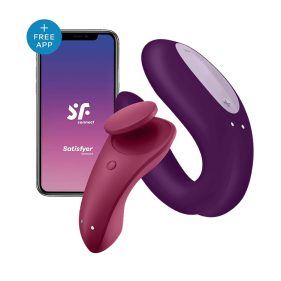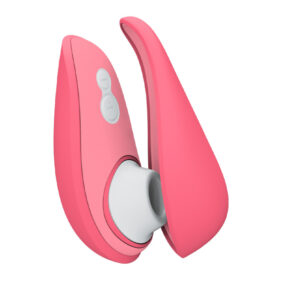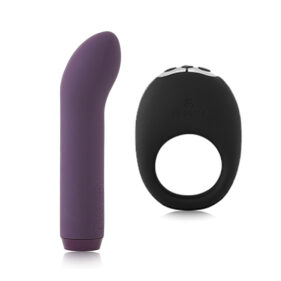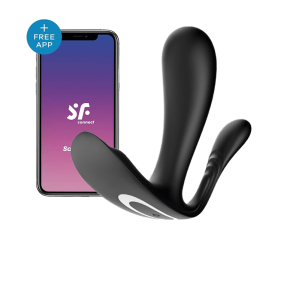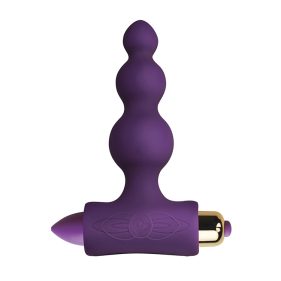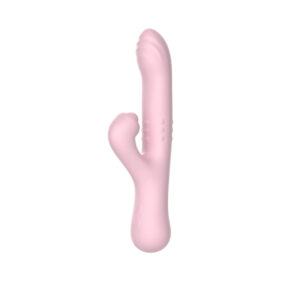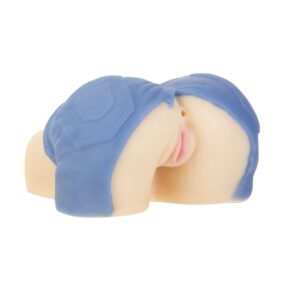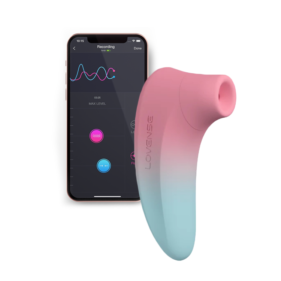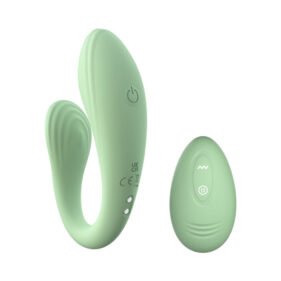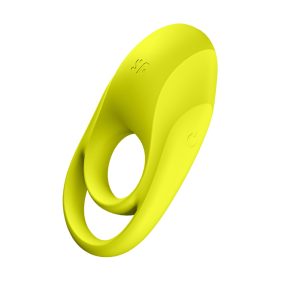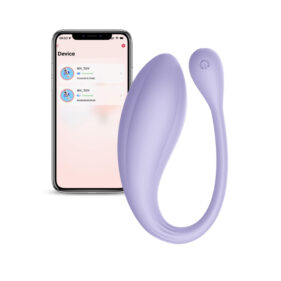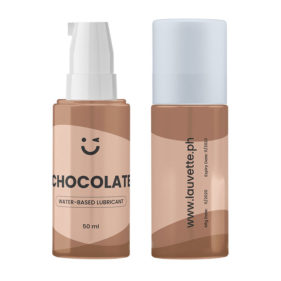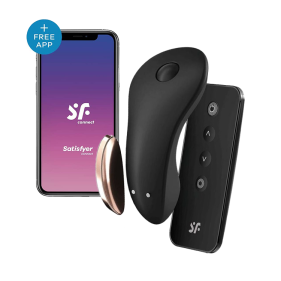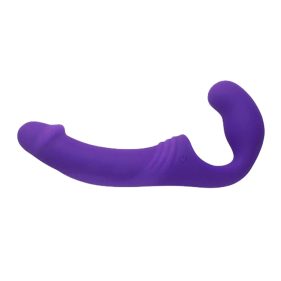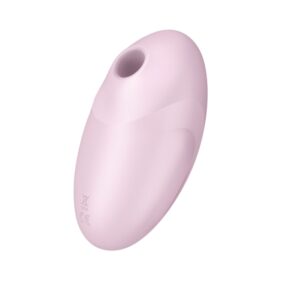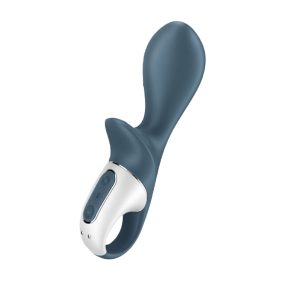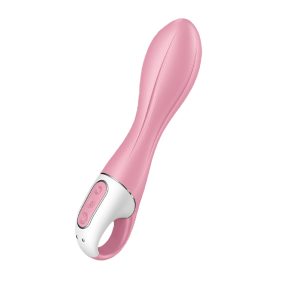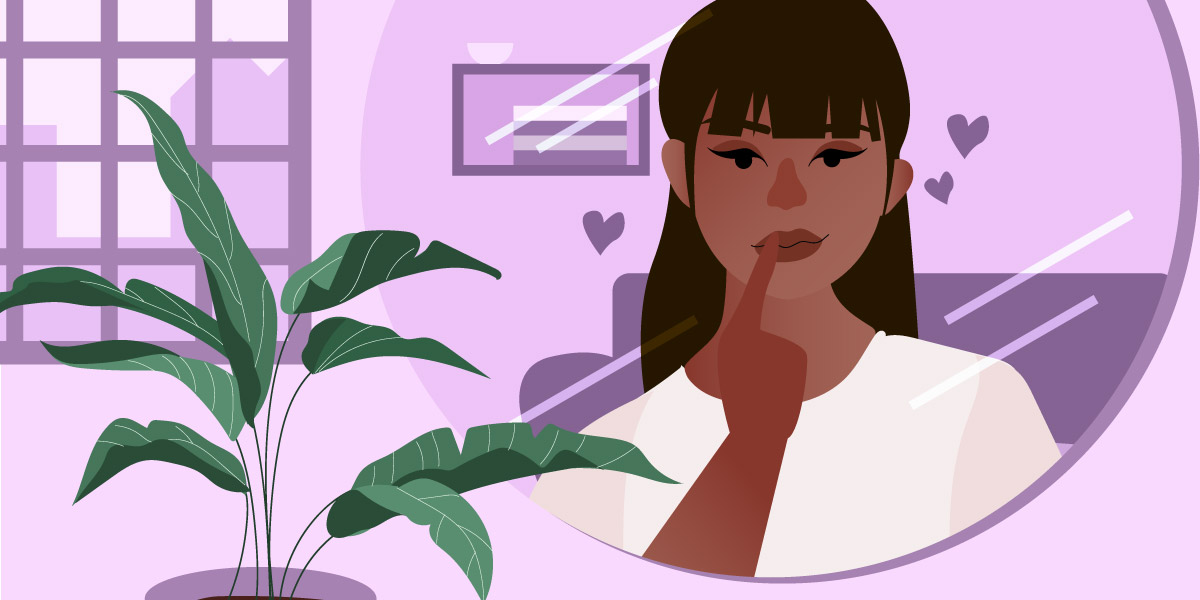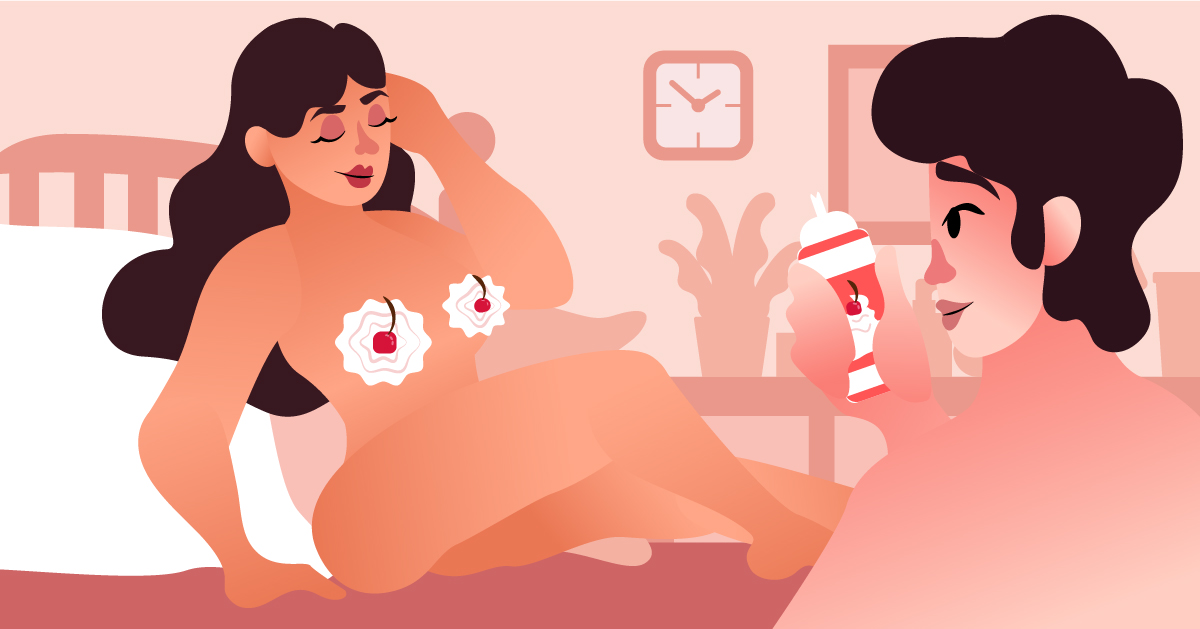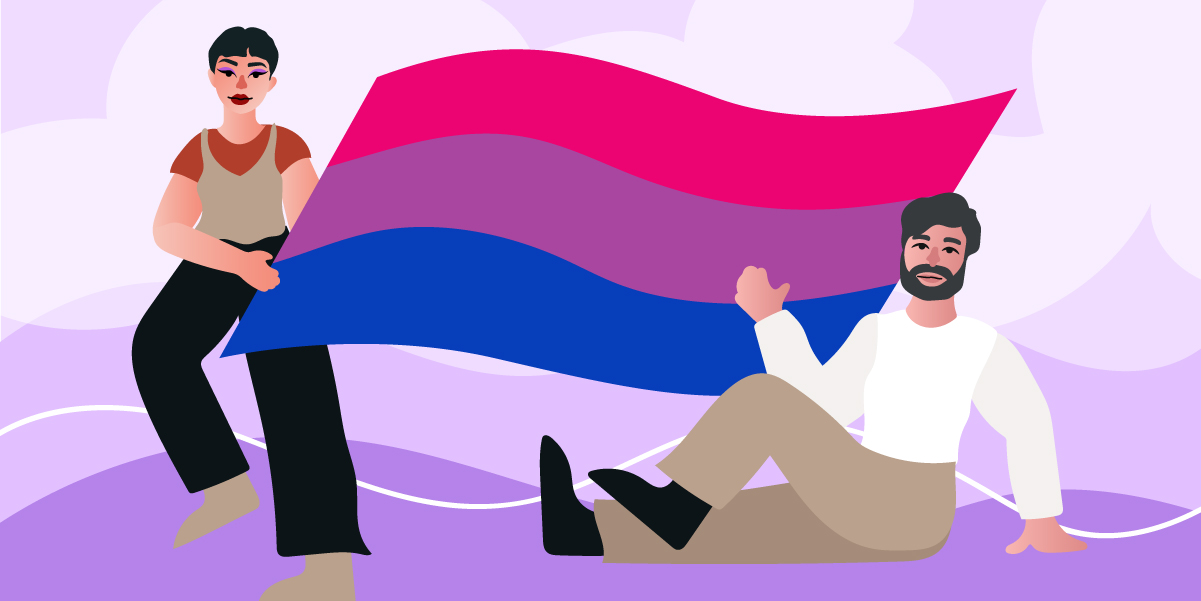
Do you feel romantic or sexual attraction to multiple genders? Do you like the idea of dating a man or woman in the future? Are you searching “what is bisexuality” online to find out if you’re bisexual or not? We’re here to help you out. For this guide, we will discuss what bisexuality is and debunk its common misconceptions.
What is Bisexuality?
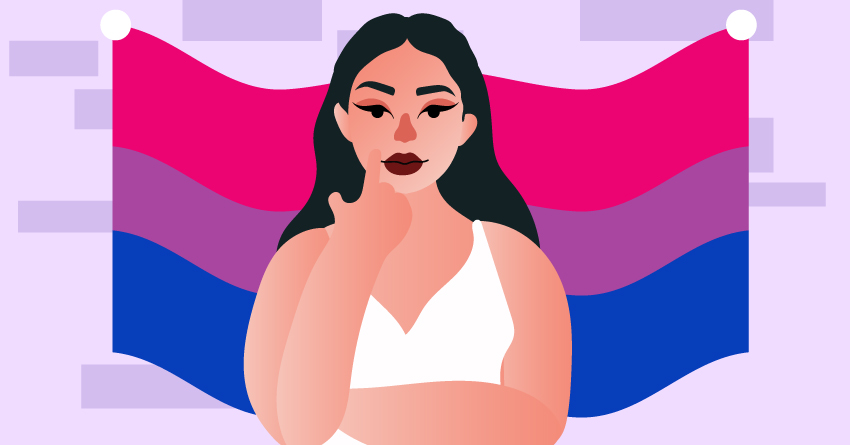
Bisexuality is a sexual orientation that involves having a romantic and sexual attraction to more than one gender. Though the general definition states that a bisexual or bi-person is attracted towards both men and women, it can have a different meaning depending on the individual. Bisexuality can also mean attraction to multiple genders and attraction beyond gender.
How to Find Out If You’re Bisexual
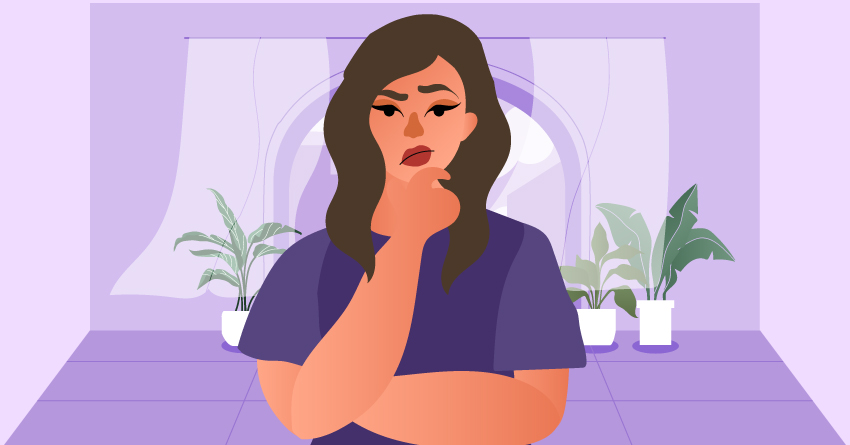
The only way to find out if you’re bisexual is through yourself. There are no specific signs of bisexuality or quizzes that could help you figure things out; sexuality is more complex than one might think. If you’re questioning your sexual orientation and wondering if you’re bi or not, you may refer to this set of questions below. Take some time to reflect upon your answers.
- Am I attracted to two or more genders?
- What makes me attracted to these genders?
- Does the thought of being a bisexual make me happy?
- Am I comfortable or relieved with the idea of being bisexual?
- Does being bisexual make me feel good about myself?
If you’ve answered yes to any of the questions above, then it’s valid to label yourself as bisexual. Now, if you’re still a bit confused after assessing your feelings on the matter, don’t worry; it’s normal to get confused when you’re figuring out your sexuality. Don’t pressure yourself to put on some label just to get over it. Just be patient, and with enough time, you’ll soon figure out what your sexual orientation is.
History of Bisexuality
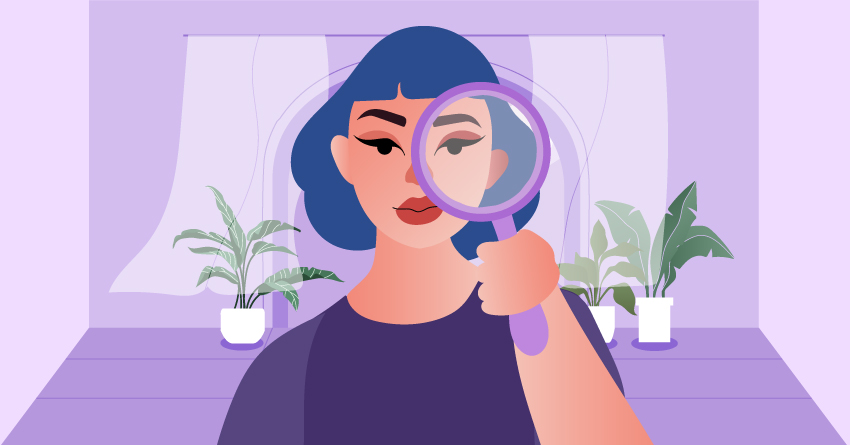
This sexual orientation was first referred to by the American neurologist Charles Gilbert Chaddock in his 1892 translation of Krafft-Ebing’s seminal work Psychopathia Sexualis, an 1886 book that discusses sexual pathology. Before his work, “bisexual” was only used to reproductive hermaphrodites, particularly in botany.
Despite the introduction of this orientation, being in non-conventional relationships such as bisexuality is considered taboo, so people weren’t as openly bias we are now in the present time. This will then gradually change in the 1960s, as bisexual political activism groups started to pop up, and by 1969, a series of spontaneous riots in response to the June 28th police raid of the Stonewall Inn took place; also known as the Stonewall Uprising.
One month after the Stonewall Uprising, bisexual activist Brenda Howard organized the Christopher Street Liberation Day March. She then coordinated another march to commemorate the year anniversary of the Stonewall riots; this has become the beginning of a longstanding tradition of the Pride Parade.
As of today, being bisexual isn’t as shunned as it was before the LGBTQ+ movement, but there are still challenges that bi-people face from the community. One of which is bisexual erasure or bisexual invisibility, which involves ignoring or removing the existence and legitimacy of bisexuality. This is due to numerous misconceptions that queer and straight people have about this sexual orientation. Learn more about these myths in the next section.
Misconceptions About Bisexuality
One of the biggest challenges bisexual people face is bisexual invisibility or bisexual erasure, which invalidates bisexuality on a societal or interpersonal level. This is due to the deeply-rooted and inaccurate stereotypes about bi-people and their orientation.
As part of helping the community combat this challenge, we’ve listed and debunked all the common myths about bisexuality below.
1Myth: “Bisexuality isn’t real.”
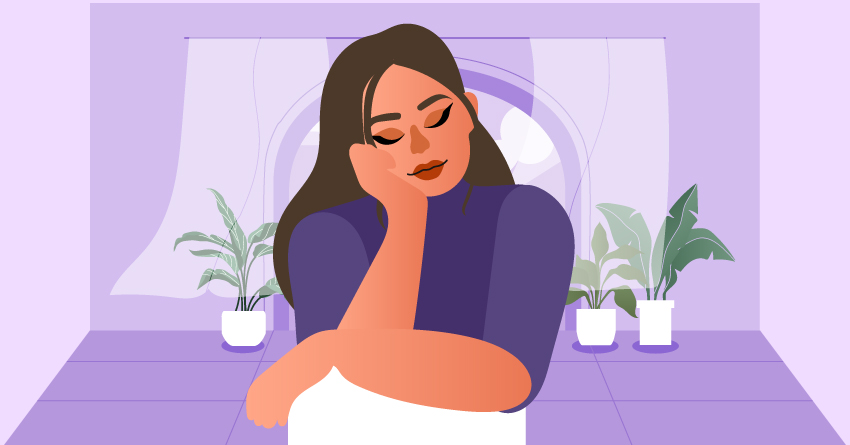
One of the common myths about bisexuality is that it’s not real. According to Brian A. Feinstein, Ph.D., an associate professor of psychology at Rosalind Franklin University of Medicine and Science in Chicago, during his interview on health.com, the main reason why people are disregarding bisexuality is that they don’t believe that there’s a “gray area” in one’s sexuality. People believe that bisexuals should pick a side; they’re either attracted to the opposite or same-sex.
This “bisexuality isn’t real” claim is nothing but a myth. Bi-people have been part of the queer community ever since the beginning of the LGBTQ+ movement. In fact, the first person to organize a pride event, Brenda Howard, is bisexual. So for those who believe in ignorant claims about bisexuality not being real, it’s time to ditch the notion and start respecting bi-people and their orientation.
-
₱6,745.00
-
₱5,700.00
-
₱8,385.00
-
₱750.00
2Myth: “Being bisexual is just a phase.”
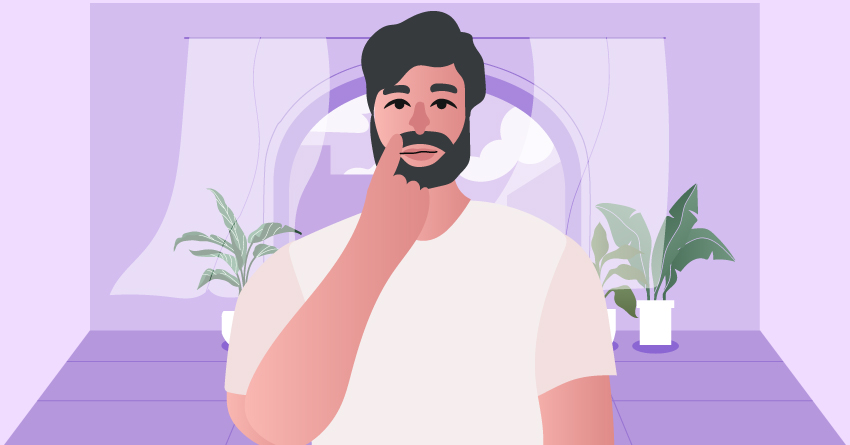
Most people think that bisexuality is just a stepping stone for people to figure out their sexuality. For example, if a bisexual person ended up with someone of the same sex, they are no longer bisexual; they’re now considered gay or lesbian. If the bisexual person ended up with someone from the opposite sex, then they’re straight now.
Here’s the truth, bisexuality isn’t a phase; bisexual people can still be attracted to men and women even if they’re dating someone from the same sex or opposite sex.
-
₱4,495.00
-
₱2,000.00
-
₱4,745.00
-
Original price was: ₱1,850.00.₱925.00Current price is: ₱925.00.
3Myth: “Bisexual people are indecisive with their sexual orientation.”
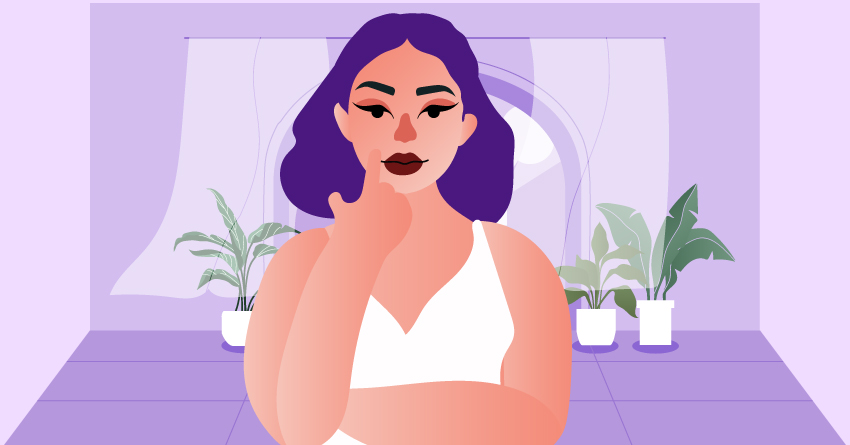
Another misconception about bi-people is that they’re confused and can’t make up their mind. People don’t realize, though, that bi-people aren’t indecisive— they chose to identify themselves as bisexuals. If someone labeled themselves as a bisexual person, then they’re bi, as simple as that. They’re not “still in the middle of being gay or straight” or “still curious about their sexuality.”
It’s normal for people to get confused and unsure about their sexuality, especially when they’re just beginning to figure things out. However, assuming that a bisexual person is “indecisive” is downright disrespectful, as you’re invalidating their sexual orientation.
4Myth: “Bisexual folks can be gay or straight, depending on their current partner.”
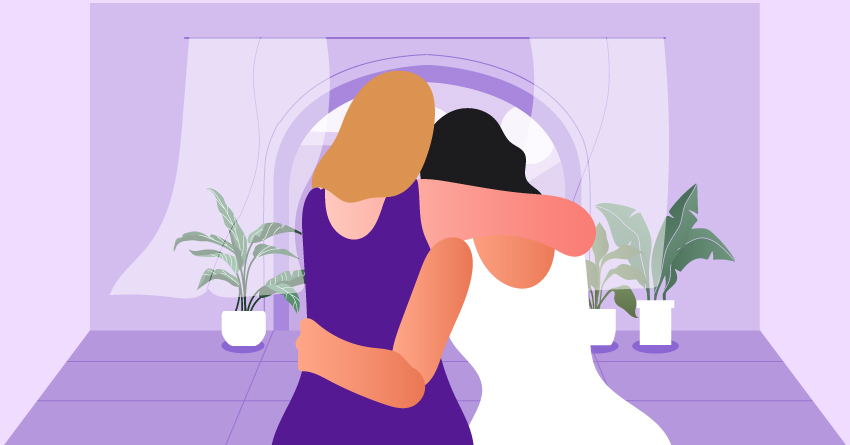
People think that bisexuals can become straight or gay depending on their current relationship; if a bisexual cisgender woman is dating another woman, then she’s a lesbian for now. If she ends up with a man in her next relationship, she’s a straight woman now.
As we’ve mentioned earlier, a bisexual person doesn’t change just because they’re dating someone of the opposite or same-sex. They’re not some “sexuality chameleon” that changes their sexual orientation depending on the relationship. Their attraction to two or more genders is still there.
5Myth: “Bisexuality and pansexuality are exactly the same.”
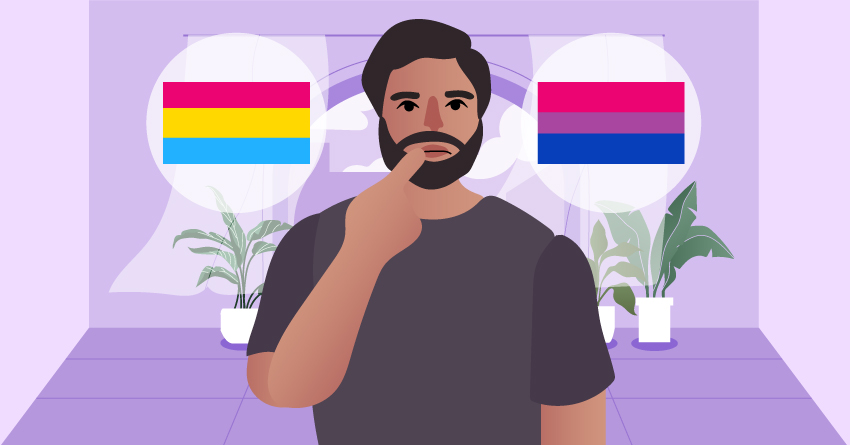
There’s still an ongoing discussion about bisexuality and pansexuality, as the definitions of these orientations are somewhat overlapping. However, these two terms are not exactly the same.
Bisexuality is the romantic or sexual attraction to two or more gender identities. As mentioned in the definition above, it can also mean attraction to multiple genders or love beyond gender. On the other hand, pansexuality is romantic or sexual attraction to all genders, including people who do not identify as a specific gender.
When someone is bisexual, they don’t necessarily get attracted to all genders. They may not still experience attraction to certain gender identities. On the other hand, pansexuals have the same level of attraction to everyone; they’re more focused on the personality and values of the person they’re dating rather than the sexual orientation they identify with.
6Myth: “Men can’t be bisexual.”
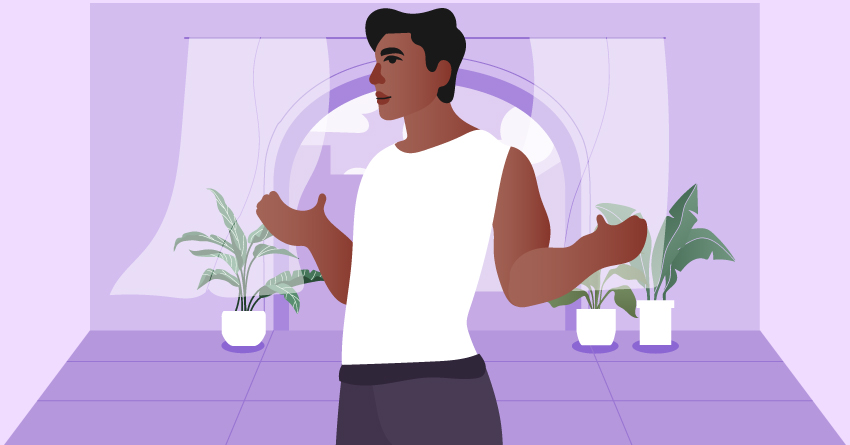
Another common myth about bisexuality is that it only exists in women. If a guy is bisexual, they’re seen as a gay person who couldn’t come out yet, so they’re using the bisexual label.
The truth is, all gender identities can be bisexual. Whether you identify yourself as non-binary, cisgender, or transgender, you can identify your sexual orientation as bisexual. So if a guy ends up getting attracted to two or more genders, he has the right to label himself as bi.
This “men can’t be bisexual” notion is not only inaccurate but also disrespectful. It invalidates the person’s sexual orientation and even accuses them of “hiding” from their true sexuality.
-
₱6,745.00
-
₱2,445.00
-
₱6,245.00
-
₱7,530.00
7Myth: “You can’t identify as bisexual unless you’ve been with both genders.”
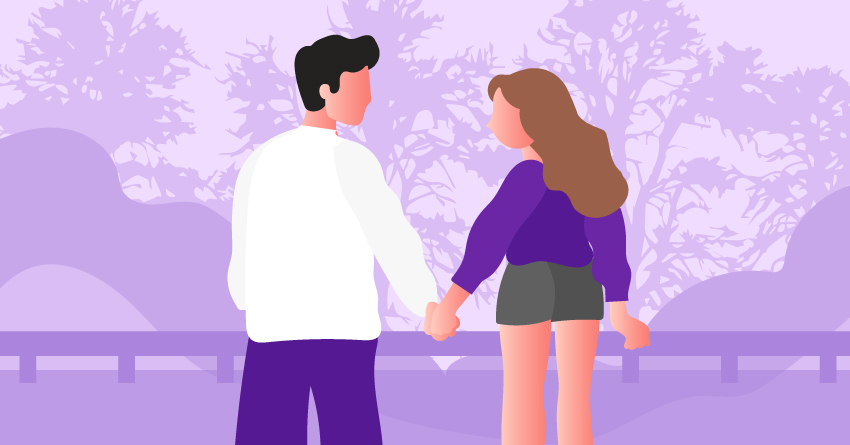
Let’s go back to the main definition of bisexuality. As we’ve mentioned above, it has romantic and sexual attraction to more than one gender. The definition says “attraction” and not “relationship.”
Bisexual people aren’t required to be dating the genders they’re attracted to just to make their bisexuality valid. Their bisexuality isn’t dependent on the people they’re dating.
So if you feel like you’re bisexual but couldn’t confirm it because you haven’t tried dating someone from the same sex or opposite sex, just ask yourself if you’re romantically or sexually attracted to multiple genders. If you’re attracted to two or more gender identities, you’re most likely to be bisexual.
-
₱2,445.00
-
₱2,695.00
-
₱2,745.00
-
₱1,450.00
8Myth: “All bisexual folks have multiple partners.”
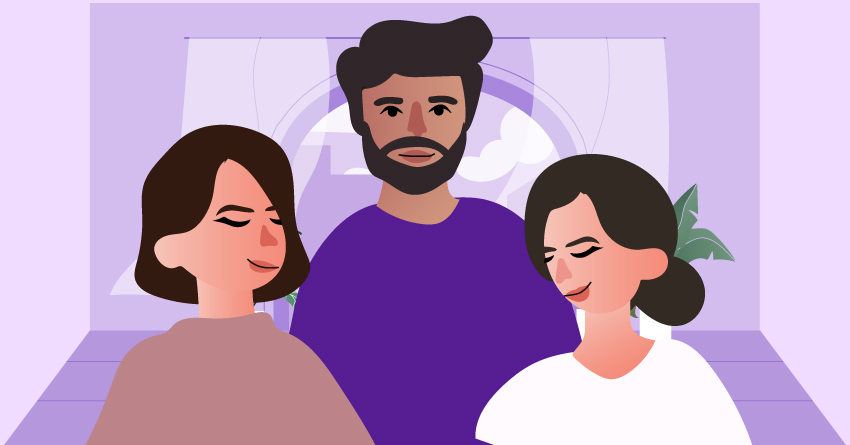
Bisexuality is different from polyamory, a form of non-monogamous relationship involving three or more people attracted to each other and followed certain guidelines to ensure the harmonious connection of the relationship. Bisexual people being attracted to multiple genders doesn’t mean they’ll have multiple partners; bi-people can be monogamous or non-monogamous, depending on their preferred relationship setup.
9Myth: “Bisexual people can only be attracted to cisgender men and women.”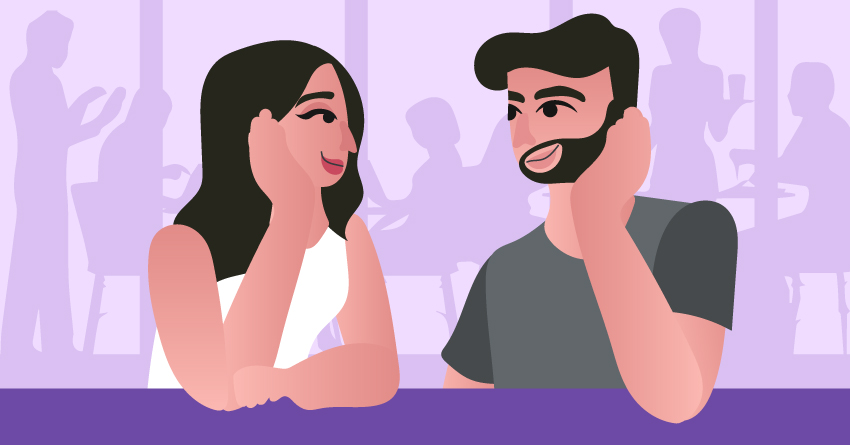
This misconception is rooted in the “bi-” prefix of the term bisexual. Since “bi-” means two or double, people assume that bisexual people can only be attracted to two genders, specifically cisgender men and women.
However, this claim invalidates other experiences and preferences of most bisexuals. Being attracted to more than two gender identities doesn’t make you any less bisexual. As we’ve mentioned earlier, being bisexual can also mean attraction to multiple genders.
-
₱150.00
-
₱150.00
-
₱150.00
-
₱150.00
10Myth: “It’s easier to be bisexual compared to other LGBTQ+ people.”
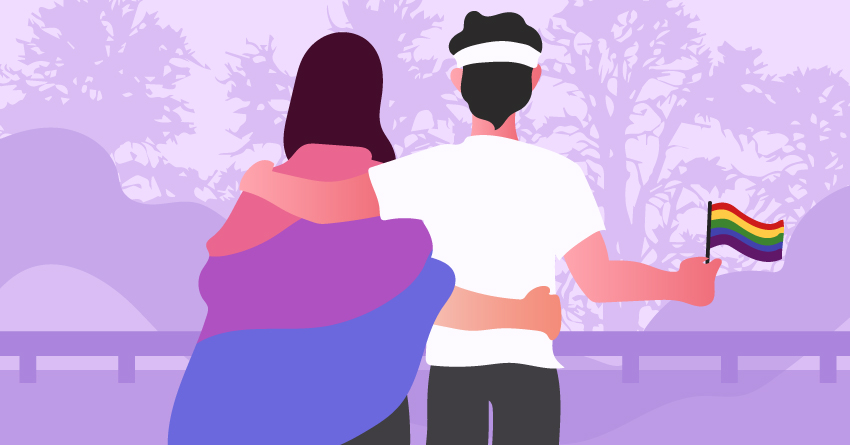
One of the biggest myths surrounding bisexuality is that bi-people have the same privileges as straight people do. People believed that since bisexuals aren’t “officially” gay, they’re not being discriminated against as gay or lesbians.
The truth is there’s no such thing as a bisexual privilege. Bi-people also experience discrimination from straight people and even in the queer community. They don’t get as much representation in the media, and if they do, their sexuality is labeled as a “wild yet dirty secret.” They also face challenges such as bisexual invisibility, wherein people consider their sexuality as non-existent. Not only that, but people also accuse bisexuals of being transphobic, when bisexuality has always been an inclusive orientation.
So nope, bisexual people don’t have it easy. Same with people with other non-traditional sexual orientations, they also face the stigma because of their sexuality.
11Myth: “People identify themselves as bisexual to be hip and trendy.”
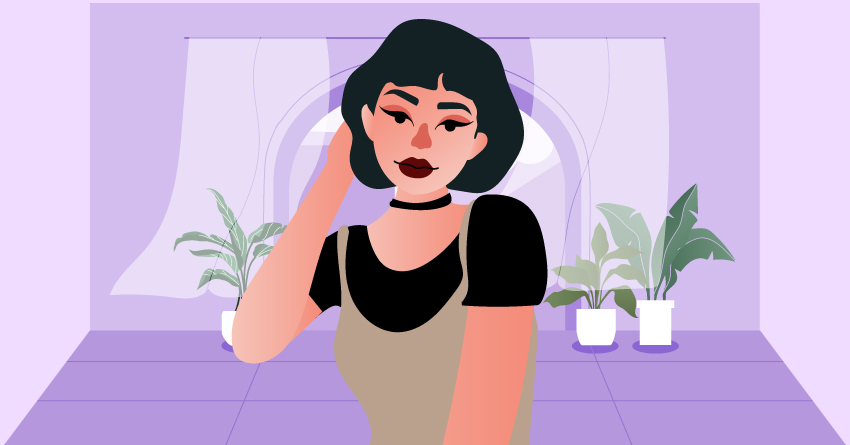
This misconception is not just inaccurate; it’s also absurd. Bisexuality and other sexual orientation in the LGBTQ+ spectrum isn’t some trend that people get into.
We get that there’s a fetishization of bisexuality because of pornography; some erotic videos online have plots wherein “a woman becomes bi because of their friend/workmate/random stranger, and they ended up liking it” or something similar that. However, we shouldn’t invalidate bisexuality just because of some weird folks who decided to make it “trendy” or “sexy,” but instead question the societal structure that fetishizes this sexuality in the first place.
-
₱5,395.00
-
₱1,490.00
-
₱3,395.00
12Myth: “Bisexual people are lesbian/gay but couldn’t accept their orientation.”
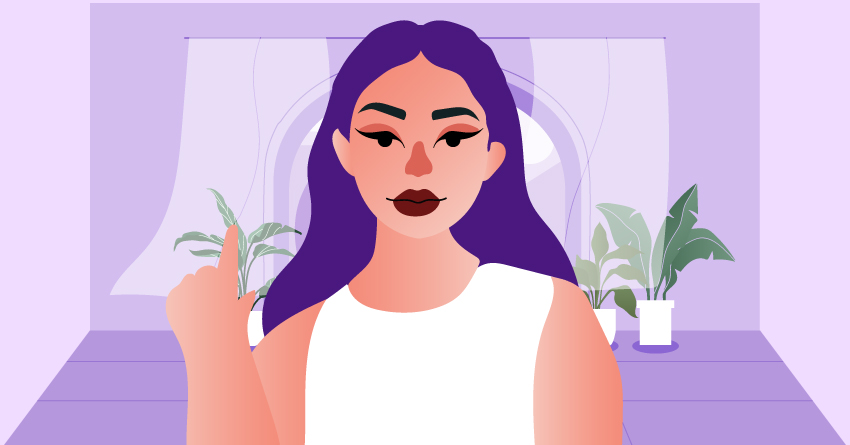
Some people think that bi-people are simply in denial about their true sexuality. Here’s the thing though, bisexual people aren’t denying their orientation. In fact, they’ve given it a label— they’re bisexual. Enough said.
13Myth: “Bisexual people are half-straight and half-gay.”
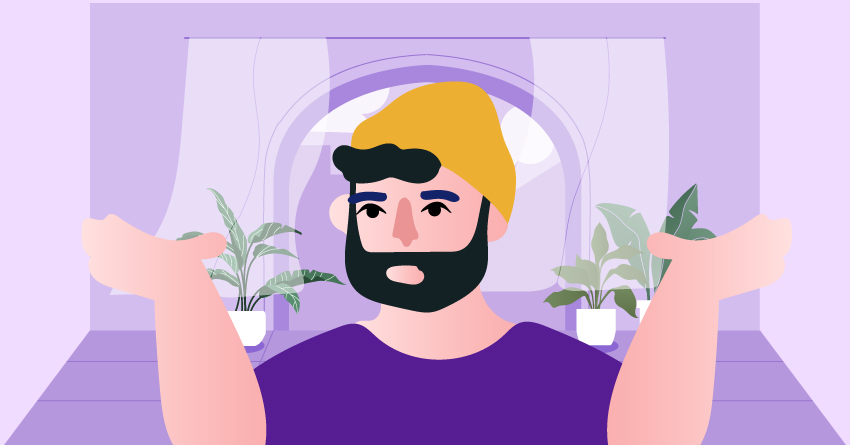
Bisexual people are not 50% gay or 50% straight. If you’re a bisexual woman and found yourself liking more cisgender women than cisgender men, that doesn’t mean you’re 75% gay and 25% straight. You’re simply 100% bisexual because you’re attracted to two or more genders; you’re still bi regardless of the levels of attraction you have on your preferred genders.
14Myth: “Bisexuals are always down for threesomes.”
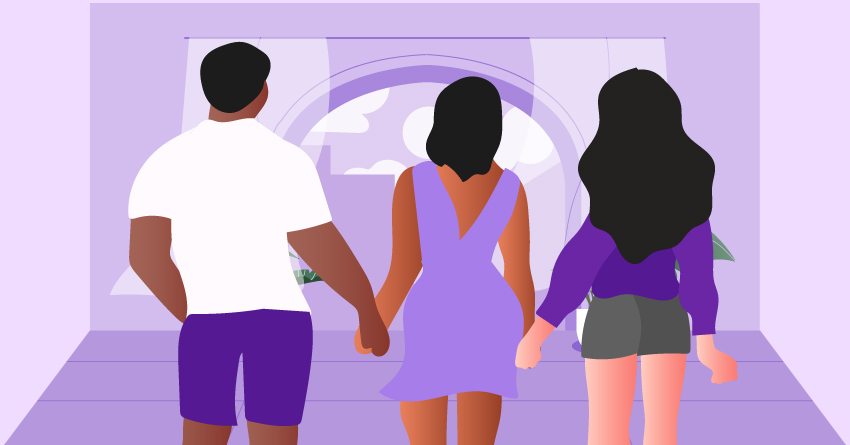
Another misconception people have about bisexuality is that bi-people are the perfect unicorns (the third partner on a threesome) since they’re attracted to both men and women.
The truth is not all bisexuals are interested in a three-way or group sex. A person’s sexual orientation doesn’t determine their preferences in the bedroom. Some bisexuals prefer having sex with one person only, then others are up for wild orgies. So it’s time to ditch that assumption for those who think that all bi people are up for threesomes. The only way to know if a person is interested in a three-way or not is by asking them.
15Myth: “Bisexual folks will be most likely to cheat with their partners.”
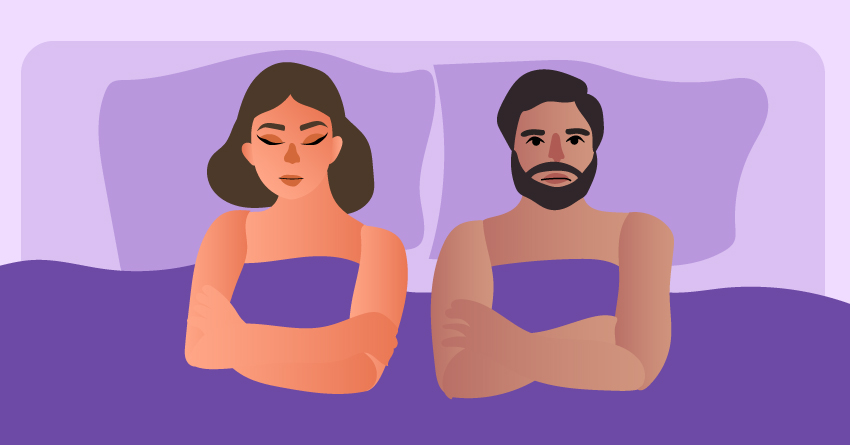
Another common misconception about this sexual orientation is that bi-people would most likely cheat on their partners. This is rooted in the myth that “bisexuals can’t make up their mind.” People assume that if a bisexual person in a relationship likes someone of the same sex, they will just date that person on the side of ditch their current partners.
However, this notion is nothing but a myth. A person’s sexuality doesn’t determine a person’s faithfulness. Cheaters come in different sexual identities, sexual orientations, and sexual expressions.
-
₱4,745.00
-
Original price was: ₱4,745.00.₱4,270.50Current price is: ₱4,270.50.
-
Original price was: ₱4,490.00.₱2,245.00Current price is: ₱2,245.00.
-
Original price was: ₱2,645.00.₱1,322.50Current price is: ₱1,322.50.
16Myth: “It’s pointless for a bi-person to come out.”
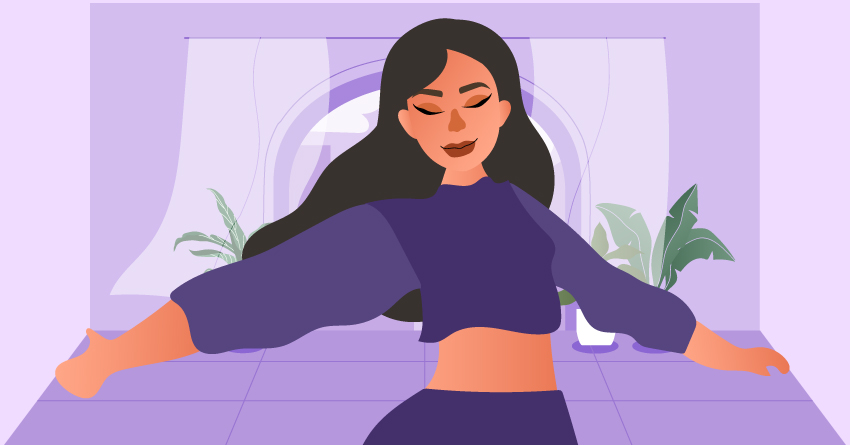
Here’s another absurd myth surrounding bisexuality. Since people think that bisexual people are still trying to “pick a side” or “confused” with their orientation, they believe there’s no need for bi-people to come out.
Everyone has the right to come out and express themselves. Coming out as bisexual is as important as coming out as gay, lesbian, non-binary, and other gender identities in the LGBTQ+ community. As long as you can assure your safety and that you’re comfortable and ready to tell your loved ones about your orientation, go for it!
17Myth: “Transgender people cannot be bisexual.”
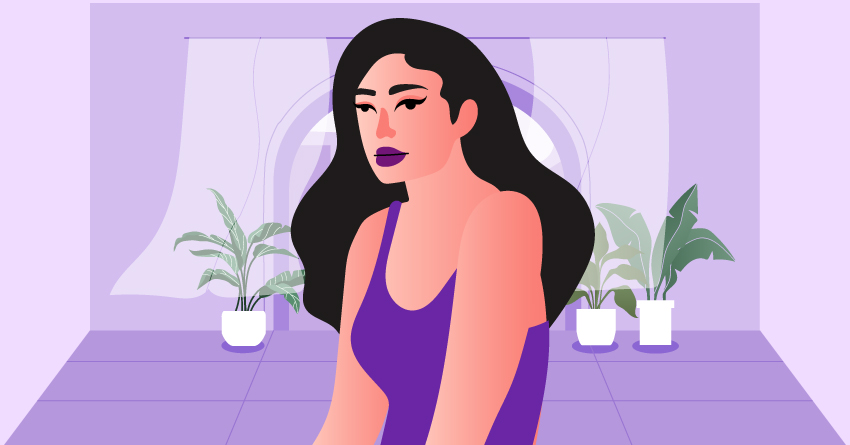
As we’ve mentioned earlier, all gender identities can choose bisexuality as their sexual orientation. This means that a transgender person can also be romantically attracted to two or more genders. Their gender identity (being transgender) doesn’t affect how they love others (sexual orientation).
18Myth: “Bisexual people have to look a certain way.”
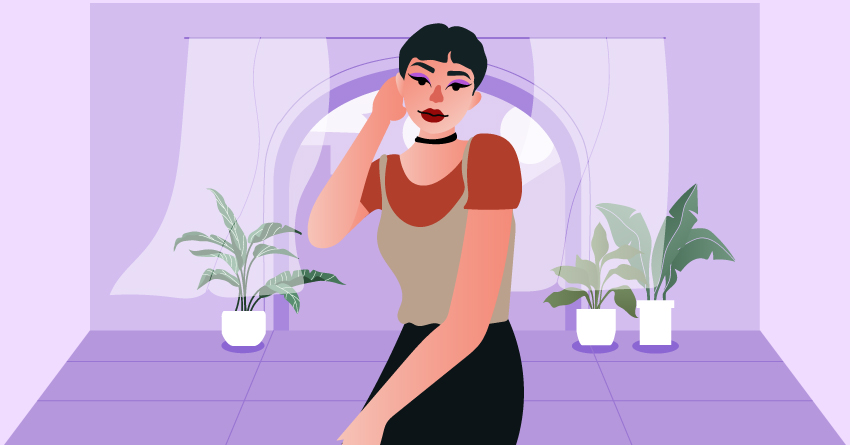
Ever heard of bisexual lighting? It’s been a thing with movies and television series that showcase bisexual characters. This visual aesthetic involves putting pink, purple, and blue lights on a scene, usually in a nightclub or the character’s apartment; it gives that neon-ish, avant-garde look.
Because of the said aesthetic, most shows also introduce bi-characters that fit the “bisexual aesthetic.” Bisexuals would often be hipster-ish individuals that have multiple partners. They’re usually androgynous, have edgy humor, and support the “normal” lead characters.
This would then lead to the assumption that bisexuals are either these sensual vixens or androgynous individuals. But the thing is, bisexual people can come in different forms. Some may be androgynous, while others may look feminine or masculine. Not everyone has that “hipster and edgy” vibe on them.
So if you want to know if a person is bisexual or not, the best way to find out is by striking a conversation. Don’t assume their sexual orientation just because of their fashion style and preferred aesthetic.
Takeaway
Despite the multiple online resources regarding bisexuality, some people still have ignorant beliefs about this sexual orientation. This is why spreading the word is essential; this would break barriers, destigmatize the orientation, and clarify the misconceptions.
Let’s help the bisexual community debunk myths surrounding their sexuality by sharing this post and other helpful resources you may find online. Sharing these resources will help them stop bisexual invisibility, stigma, discrimination, and other related challenges.
